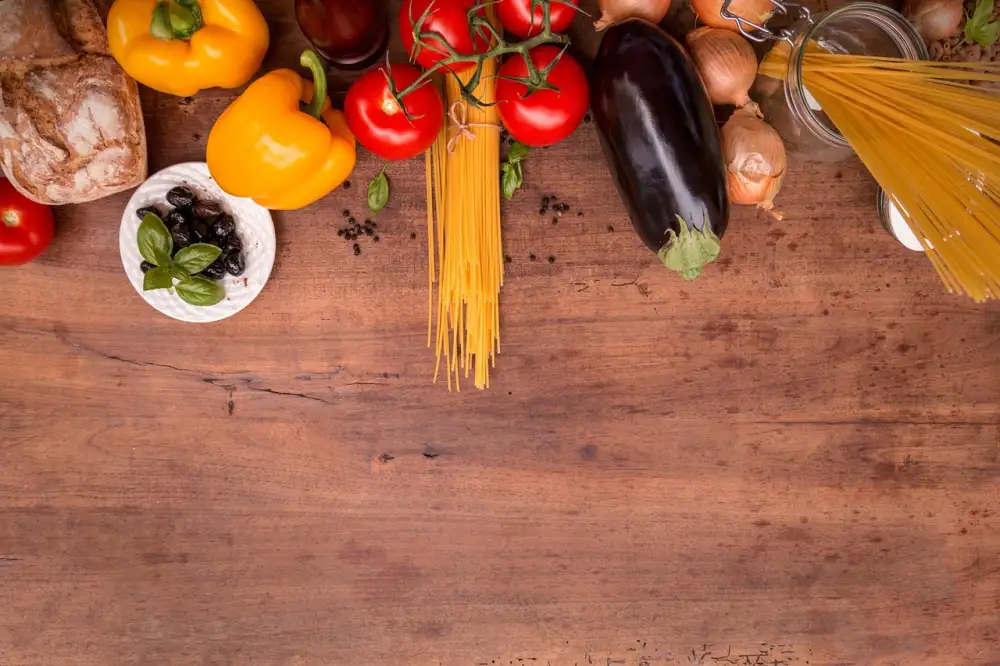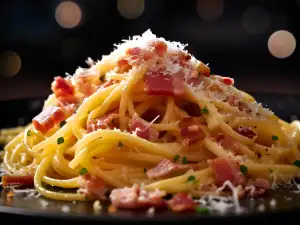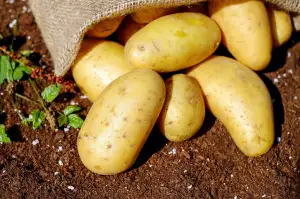From Farm to Fork: Master the Art of Making Spaghetti with our Step-by-Step Guide!

Spaghetti, a beloved Italian pasta dish, has become a staple in kitchens around the world. Its long, thin strands and versatile nature make it perfect for pairing with a variety of sauces and ingredients. Whether you prefer a classic marinara or a creamy Alfredo, mastering the art of making spaghetti will allow you to create delicious and satisfying meals for yourself and your loved ones. So, grab your apron and let's dive into the world of spaghetti-making!
Gathering the Ingredients
Before you embark on your spaghetti-making journey, it's essential to gather all the necessary ingredients. The beauty of spaghetti lies in its simplicity, so you won't need a long list of items. Here's what you'll need:
1. Spaghetti noodles: Choose high-quality dried spaghetti noodles or opt for fresh ones if available.
2. Salt: A pinch of salt will enhance the flavor of the pasta while boiling.
3. Olive oil: A drizzle of olive oil adds richness and prevents the noodles from sticking together.
4. Water: You'll need a large pot of water to boil the pasta.
5. Tomato sauce: Use canned tomato sauce or make your own with fresh tomatoes, garlic, and herbs.
6. Ground meat (optional): If you prefer a meaty sauce, gather some ground beef or Italian sausage.
7. Onion and garlic: These aromatic ingredients will add depth to your sauce.
8. Herbs and spices: Gather dried basil, oregano, and crushed red pepper flakes for seasoning.
Once you have all these ingredients ready, it's time to move on to the next step in our spaghetti-making adventure - boiling the pasta!
Boiling the Pasta
Once you have gathered all the necessary ingredients, it's time to move on to the next step: boiling the pasta. Fill a large pot with water and bring it to a rolling boil over high heat. Add a generous amount of salt to the boiling water - this will help season the pasta as it cooks.
Next, carefully add the spaghetti to the boiling water. Make sure not to overcrowd the pot, as this can cause the pasta to stick together. Stir gently with a fork or tongs to ensure that all the strands are submerged in the water.
Cook the spaghetti according to package instructions, usually around 8-10 minutes for al dente pasta. Keep an eye on it and taste test occasionally to ensure that it is cooked to your desired level of doneness. Remember, al dente means "to the tooth" in Italian, indicating that there should be a slight bite or firmness to the pasta.
While cooking, stir occasionally to prevent sticking and clumping. Be careful not to overcook, as mushy spaghetti can ruin an otherwise delicious dish. Once cooked, remove from heat and drain immediately using a colander.
Boiling pasta may seem like a simple task, but getting it just right is crucial for achieving that perfect texture and flavor. With practice and attention to detail, you'll soon become a master at boiling spaghetti!
Preparing the Sauce
Now that you have your pasta boiling away, it's time to focus on creating a delicious sauce to complement your spaghetti. The options are endless when it comes to choosing a sauce, but let's stick with a classic tomato-based sauce for now.
Start by heating a tablespoon of olive oil in a large skillet over medium heat. Once the oil is hot, add finely chopped onions and garlic, and sauté until they become translucent and fragrant. This will infuse your sauce with incredible flavors.
Next, add a can of crushed tomatoes to the skillet along with some tomato paste for added richness. Season the sauce with salt, pepper, dried oregano, and basil. Feel free to customize the seasoning according to your taste preferences.
To enhance the depth of flavor, you can also add a splash of red wine or balsamic vinegar. Let the sauce simmer gently for about 15-20 minutes, allowing all the flavors to meld together beautifully.
If you prefer a smoother texture, you can use an immersion blender or transfer the sauce to a regular blender and puree until smooth. This step is optional but can give your sauce a velvety consistency.
Once your sauce is ready, give it a taste test and adjust the seasoning if needed. If you like it spicy, feel free to add some red pepper flakes for an extra kick.
Remember that homemade sauces often taste better when they have had time to sit and develop their flavors. So if possible, make your sauce ahead of time and let it rest for at least an hour before serving.
Now that you have mastered the art of preparing a delectable spaghetti sauce from scratch, it's time to move on to cooking the spaghetti itself!
Cooking the Spaghetti
Now that you have prepared the sauce, it's time to cook the spaghetti. Fill a large pot with water and bring it to a rolling boil. Add a generous amount of salt to the boiling water - this will help flavor the pasta.
Carefully add the spaghetti to the pot, making sure not to break them. Give it a gentle stir to prevent sticking. Follow the cooking time mentioned on the package as a guide, but remember to taste for doneness as cooking times can vary.
While cooking, stir occasionally to ensure even cooking and prevent clumping. The spaghetti should be cooked al dente, which means it should still have a slight bite to it.
Once cooked, carefully remove a strand of spaghetti and test its texture. If it's too firm, continue cooking for another minute or so. If it's too soft, you've overcooked it.
When the spaghetti is perfectly cooked, turn off the heat and drain immediately. Use a colander or sieve to separate the pasta from the hot water. Give it a quick rinse with cold water to stop further cooking and remove excess starch.
Remember not to rinse excessively as this can wash away some of the flavors that cling onto the pasta strands. A light rinse is sufficient.
Now that your spaghetti is perfectly cooked and drained, it's ready to be combined with your delicious homemade sauce. Toss gently until every strand is coated in that rich, flavorful goodness.
The combination of perfectly cooked spaghetti and homemade sauce will create an unforgettable dining experience for you and your loved ones. So go ahead, take pride in your culinary skills and savor every mouthful of your homemade masterpiece!
Draining and Plating
Once the spaghetti is perfectly cooked to al dente, it's time to drain the pasta. Carefully pour the contents of the pot into a colander in the sink. Allow the hot water to fully drain from the pasta, ensuring that no excess moisture remains.
Next, transfer the drained spaghetti back into the empty pot. This will help retain some of the residual heat and prevent it from cooling too quickly. Gently toss the pasta with a drizzle of olive oil to prevent sticking.
Now it's time to plate your masterpiece! Take a serving plate or bowl and twirl a generous portion of spaghetti onto it using a fork or tongs. Don't worry about making it look perfect; a rustic presentation adds charm to homemade dishes.
Remember to leave enough space on the plate for your delicious sauce. You can create a well in the center of your mound of spaghetti or simply pour it over the top. The choice is yours!
The drained and plated spaghetti is now ready to be adorned with your carefully prepared sauce. Whether it's a classic marinara, creamy Alfredo, or flavorful pesto, pour it over your pasta evenly, ensuring every strand is coated with its delectable flavors.
Take a moment to appreciate how beautifully everything has come together - from farm-fresh ingredients to perfectly cooked pasta and mouthwatering sauce. Your homemade spaghetti is almost ready to be devoured!
But before you dig in, let's add some final touches in our next step: garnishing and serving.
Garnishing and Serving
Now that your homemade spaghetti is ready, it's time to add the finishing touches. Garnishing not only enhances the visual appeal but also adds an extra burst of flavor to your dish. Sprinkle some freshly grated Parmesan cheese over the top for a delightful cheesy kick. For a touch of freshness, garnish with a handful of chopped basil leaves or parsley. If you like it spicy, add a pinch of red pepper flakes for that extra heat. Serve your masterpiece on warm plates and pair it with a side of garlic bread or a crisp salad. Enjoy every bite of your delicious homemade spaghetti creation!
Now that you have mastered the art of making spaghetti, it's time to sit back, relax, and enjoy the fruits of your labor. There's something incredibly satisfying about indulging in a plate of homemade spaghetti, knowing that you put in the effort to create this delicious dish from scratch.
As you take your first bite, savor the flavors that come together harmoniously - the al dente pasta, the rich and flavorful sauce, and any additional toppings or garnishes you chose to add. Each mouthful is a celebration of freshness and craftsmanship.
Whether you're enjoying your homemade spaghetti alone or sharing it with loved ones, take a moment to appreciate the journey this dish has taken - from farm to fork. The ingredients carefully selected, the pasta cooked just right, and the sauce simmered to perfection. It's a testament to your culinary skills and dedication.
So go ahead, dive into that plate of spaghetti with gusto. Let each bite transport you to an Italian trattoria or a rustic farmhouse kitchen. And remember, there's always room for experimentation and personalization when it comes to making spaghetti. Add your own twist by incorporating different herbs, spices, or even vegetables.
Homemade spaghetti is not just a meal; it's an experience. It brings people together and creates lasting memories. So gather around the table with friends and family, share stories and laughter as you indulge in this classic Italian dish.
From farm to fork, celebrate freshness in every food creation - especially when it comes to homemade spaghetti. Bon appétit!
Published: 03. 12. 2023
Category: Food



